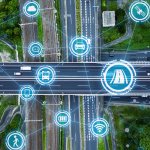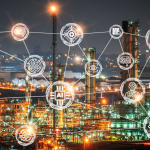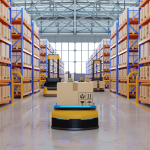As global shocks become more frequent, traditional forecasting models are falling short. AI and machine learning are stepping in, processing complex datasets, from weather patterns and geopolitical risks to real-time sales data, to deliver more accurate and adaptive demand forecasts. According to a World Economic Forum (WEF) analysis, this shift enables organizations to detect signal changes early and reduce planning errors, positioning them to respond faster to sudden shifts in demand or disruption.
Smarter Forecasting, Faster Intervention
During crisis scenarios, real-world applications have proven AI’s value. UNICEF and other humanitarian groups now use AI-enabled dashboards to track medical supply chains in conflict zones and disaster-hit regions, identifying choke points before they delay critical deliveries.
The U.S. and EU have responded to the growing strategic importance of AI with formal governance structures. The White House’s Council on Supply Chain Resilience, created in 2023, and new EU regulatory frameworks both recognize the central role of AI in safeguarding supply chains.
Inventory and Logistics Get a Predictive Overhaul
Beyond forecasting, AI is being embedded in daily operational decisions, from inventory optimization to dynamic routing. The U.S. Defense Logistics Agency, for example, uses AI to predict equipment demand, identify pre-qualified suppliers in the event of disruptions, and maintain readiness without overstocking. This model illustrates how predictive analytics can compress planning cycles while protecting against material shortages and overreliance on vulnerable nodes.
AI-driven systems are also transforming commercial logistics by reducing waste and optimizing freight flows. Predictive models now incorporate weather, port congestion, and even labor availability to dynamically reroute shipments. The TradeTech Initiative from the WEF estimates that such technologies could increase global trade flows by 13% over the next two decades by unlocking new efficiencies.
The early adopters of AI in supply chains have reported measurable gains, up to 15% in logistics cost reductions, 35% lower inventory levels, and improved service performance. But these results are contingent on more than just algorithmic power. Integrated, high-quality data remains a barrier for many firms, as does the shortage of in-house AI skills.
From Reactive Chains to Intelligent Networks
Despite clear performance gains, AI adoption faces persistent hurdles. Clean, integrated data remains in short supply, and workforce readiness is uneven. Success depends as much on governance, cybersecurity protocols, and supplier vetting as it does on algorithms.
The shift to AI is also changing job structures. Far from eliminating roles, AI is driving demand for new ones, planners, analysts, and risk managers who can work alongside intelligent systems. As supply chains advance toward more autonomous operations, organizations will need to manage not just tools but transitions in responsibility, trust, and oversight.







